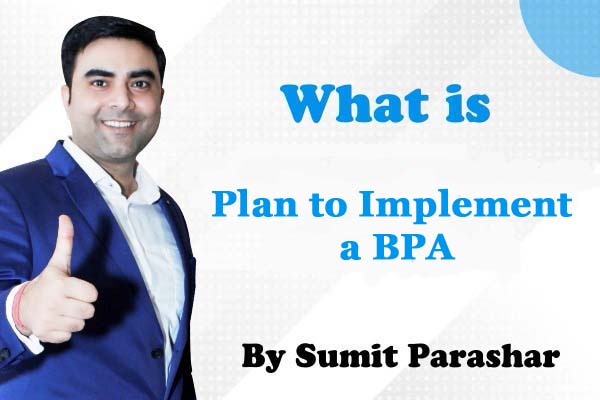
Education
Plan to Implement a BPA
Apr 12, 2021
Step 1: Define why we plan to implement a BPA?
The primary purpose for which an enterprise implements automation may vary from enterprise to enterprise.
A list of generic reasons for going for BPA may include any or combination of the following:
- Errors in manual processes leading to higher costs.
- Payment processes not streamlined.
- Paying for goods and services not received.
- Poor debtor management leading to high invoice aging and poor cash flow.
- Unable to recruit and train employee
- Lengthy or incomplete new account on-boarding
- Not being able to find documents easily during audit or law suit etc.
Step 2: Understand the rules / regulation under which enterprise needs to comply with?
In this step organization needs to understand the rules of engagement, which include following the rules, adhering to regulations and following document retention requirements.
This governance is established by a combination of internal corporate policies, external industry regulations and local, state, and central laws.
It is important to understand that laws may require documents to be retained for specified number of years and in a specified format.
Entity needs to ensure that any BPA adheres to the requirements of law.
Step 3: Document the process, we wish to automate
At this step, all the documents that are currently being used need to be documented. Following aspects need to be kept in mind while documenting the present process:
What documents need to be captured?
Where do they come from?
What format are they in: Paper, FAX, email, PDF etc.?
Who is involved in processing of the documents?
What is the impact of regulations on processing of these documents?
Can there be a better way to do the same job?
The benefit of the above process for user and entity being:
It provides clarity on the process.
It helps to determine the sources of inefficiency, bottlenecks, and problems.
It allows tore-design the process to focus on the desired result with workflow automation.
Step 4: Define the objectives/goals to be achieved by implementing BPA
Once the above three steps have been completed, entity needs to determine the key objectives of the process improvement activities.
When determining goals, remember that goals need to be SMART
a. S: Specific: That is clearly defined.
b. M: Measurable: That is easily quantifiable in monetary terms.
c. A: Attainable: That is achievable through best efforts.
d. R: Relevant: That is entity must be in need of these.
e. T: Timely: That is achieved within a given time frame.
Example: For vendor’s offering early payment discounts, entity needs to consider
How much could be saved if they were taken advantage of, and if the entity has got the cash flow to do so?
Vendor priority can be created based on above calculations, for who gets paid sooner rather than later.
Step 5: Engage the business process consultant
This is again a critical step to achieve BPA. To decide as to which company/ consultant to partner with, depends upon the following:
Objectivity of consultant in understanding/evaluating entity situation.
Does the consultant have experience with entity business process?
Is the consultant experienced in resolving critical business issues?
Whether the consultant is capable of recommending and implementing a combination of hardware, software and services as appropriate to meeting enterprise BPA requirements? Etc.
Step 6: Calculate the ROI for project
The right stakeholders need to be engaged and involved to ensure that the benefits of BPA are clearly communicated and implementation becomes successful.
Hence, the required business process owners have to be convinced so as to justify the benefits of BPA and get approval from senior management.
Right business case has to be made covering technical and financial feasibility so as to satisfy and get approval for implementing BPA.
All stakeholders need to be convinced that BPA won’t only result in cost saving but will also improve effectiveness and efficiency of service offerings.
Some of the methods for justification of a BPA proposal may include;
Cost Savings, being clearly computed and demonstrated.
Savings in employee salary by not having to replace those due to attrition.
The cost of space regained from paper, file cabinets, reduced.
Eliminating fines to be paid by entity due to delays being avoided.
Reducing the cost of audits and lawsuits.
Taking advantage of early payment discounts and eliminating duplicate payments.
Ensuring complete documentation for all new accounts. Etc.
Step 7: Developing the BPA
Once the requirements have been document, ROI has been computed and top management approval to go ahead has been received, the consultant develops the requisite BPA.
The developed BPA needs to meet the objectives for which the same is being developed.
Step 8: Testing the BPA
Once developed, it is important to test the new process to determine how well it works and identify where additional ‘exception processing’ steps need to be included.
Testing allows room for improvement before launch, increases user adoption and decreases resistance.
The process of testing is an iterative process.

